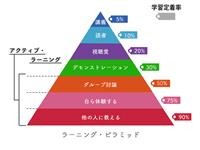1
1
Chapter 2
第2章
Thinking Like an
Economist
像经济学家一样思考
2
内容提要
Outline
?作为科学家的经济学家
The Economist as Scientist
?作为政策制定者的经济学家
The Economist as Policymaker
?为什么经济学家意见分歧
Why Economists Disagree
3
像经济学家一样思考
Thinking like an Economist
经济学的思考方法
The economic way of thinking . . .
�?要求分析地、客观地进行思考。
Involves thinking analytically and
objectively.
�?使用科学的方法。
Makes use of the scientific method.
4
科学的研究方法
The Scientific Method
观察,理论,进一步观察观察,理论,进一步观察
Observation, Theory, and More
Observation
5
科学的研究方法
The Scientific Method
�?理论分析:解释现实经济的运作。
Theoretical analysis: explain how real
world operates.
�?经验(或实证)分析:用数据检验理论经验(或实证)分析:用数据检验理论
Empirical analysis: analyze data to test the
theories.
讲逻辑讲逻辑
讲证据讲证据
6
假设的作用
The Role of Assumptions
�?作出假设是为了便于理解现实。
Economists make assumptions in order to make
the world easier to understand.
�?科学思维中的“艺术”成分是确定作出什么假设
The art in scientific thinking is deciding which
assumptions to make.
�?作出不同的假设用来回答不同的问题。
Economists use different assumptions to answer
different questions.
2
7
经济学的思考方法
The Economic Way of Thinking
?(钱颖一, 2002)(现代)经济学代表了
一种研究经济行为和现象的分析方法或
理论框架。它由三个要素组成:
�?视角(perspective)
�?参照系或基准点(reference or benchmark)
�?分析工具(analytical tools)
8
经济学的视角
The Economic Perspective
考虑个人行为时
稀缺性Scarcity
机会成本机会成本Opportunity Cost
得失交换得失交换Tradeoff
(没有免费午餐没有免费午餐No free lunch)
9
经济学的视角
The Economic Perspective:
考虑多人决策相互作用时
均衡Equilibrium
效率效率Efficiency?
双(多)赢双(多)赢(Win-win)?
10
经济学的参照系
Economic Reference
?作为经济学核心的一般均衡理论,阐明
了一个完美的市场体系如何带来经济效
率,为讨论其他经济现实问题提供了一
个参照系。
?对参照系的两种误解
�?远离现实,毫无用处
�?生搬硬套
11
经济学的分析工具:经济模型
Economic Analytic Tools:
Economic Models
�?经济学的思考方法涉及从理论中发展出抽象的
模型并分析这些模型。
The Economic way of thinking includes
developing abstract models from theories and
the analysis of the models.
�?有两个步骤Uses two approaches:
�?描述描述(报告事实等)(报告事实等)
Descriptive (reporting facts, etc.)
�?分析分析(抽象推理)(抽象推理)
Analytical (abstract reasoning)
12
经济模型
Economic Models
�?经济学家用模型来简化现实,目的是为了增进我
们对于现实世界的理解。
Economists use models to simplify reality in order
to improve our understanding of the world.
�?模型省略了许多细节,才使我们看清什么是真正
重要的。
Economic models omit many details to allow us to
see what is truly important.
�?所有模型的建立都离不开假设。
All models are built with assumptions
3
13
模型举例1:循环流向图
Model 1:The Circular-Flow
Diagram
循环流向图直观简明地展现经济中
家庭和企业间的交易活动。
The circular-flow model is a simple
way to visually show the economic
transactions that occur between
households and firms in the
economy.
14
循环流向图
The Circular-Flow Diagram
Firms
企业
Households
家庭
Market for
Factors
of Production
生产要素市场
Market for
Goods
and Services
产品和服务市场
Spending
支出
Revenue
收益
Wages, rent,
and profit 工
资、租金与利润
Income 收入
Goods &
Services sold
产品与服务出售
Goods &
Services
bought
产品与服务购买
Labor, land,
and capital
劳动,土地,资本
Inputs for
production
生产投入
15
循环流向图
The Circular-Flow Diagram
家庭家庭Households
�?购买和消费产品和服务购买和消费产品和服务
Buy and consume goods and services
�?拥有和出售生产要素(劳动、土地、资本)拥有和出售生产要素(劳动、土地、资本)
Own and sell factors of production
企业企业Firms
�?生产和出售产品和服务生产和出售产品和服务
Produce and sell goods and services
�?雇用和使用生产要素(劳动、土地、资本)雇用和使用生产要素(劳动、土地、资本)
Hire and use factors of production
16
循环流向图
The Circular-Flow Diagram
生产要素市场生产要素市场Markets for Factors of
Production
�?家庭卖家庭卖Households sell
�?企业买企业买Firms buy
产品和服务市场产品和服务市场Markets for Goods & Services
�?企业卖企业卖Firms sell
�?家庭买家庭买Households buy
17
循环流向图
The Circular-Flow Diagram
生产要素Factors of Production
�?生产物品和服务需要的投入品
Inputs used to produce goods and
services
�?土地、劳动、资本
Land, labor, and capital
18
模型举例2:生产可能性边界
Model 2: The Production
Possibilities Frontier
生产可能性边界用图形表示,给定可得
的生产要素和技术下,产出的各种组合
The production possibilities frontier is a
graph showing the various combinations
of output that the economy can possibly
produce given the available factors of
production and technology.
4
19
生产可能性边界
The Production Possibilities
Frontier
Quantity of
Computers
Produced
计算机的
产量
Quantity of
Cars Produced
汽车的产量
3,000
0 1,000
2,000
700
1,000
300
A
B
2,200
600
C
D
20
生产可能性边界
The Production Possibilities
FrontierQuantity of
Computers
Produced
Quantity of
Cars Produced
3,000
1,000
2,000
2,200
A
7006003000 1,000
B
C
D
Production
possibilities
frontier
生产可能性边界
21
生产可能性边界阐明的概念
Concepts Illustrated by the
Production Possibilities Frontier
�?效率Efficiency
�?得失交换Tradeoffs
�?机会成本Opportunity Cost
�?经济增长Economic Growth
22
4,000
生产可能性边界
The Production
Possibilities Frontier
Quantity
of Computers
Produced
Quantity of
Cars Produced
3,000
2,000
A
7000 1,000
E
2,100
750
An outward shift
in the production
possibilities
frontier
生产可能性边界外移
23
一个警告:相关性和因果关系
One Warning: Correlation v.
Causality
?经济学家常常用平面坐标系中的双变量
图形(Two Variables in the Coordinate
System)表示变量之间的因果关系。
?给定其他条件不变(ceteris paribus),A事
件引起了B事件,则我们称A和B事件之
间存在因果关系(Causality),且A是原因
(cause),B是结果(effect)。
24
一个警告:相关性和因果关系
One Warning: Correlation v.
Causality
?当我们根据现实世界的数据来作图时,
要确定一种变量如何影响另一种变量往
往是困难的。此时,我们常常会把相关
性等价于因果关系。
?当变量(事件)A和变量B的变化在时间
或空间跨度上呈现出某种确定的统计
(statistical)联系时,我们称二者存在相关
性(Correlation)。
5
25
一个警告:相关性和因果关系
One Warning: Correlation v.
Causality
?相关性可能意味着因果关系
?相关性可能并不意味着因果关系
�?被忽略的变量Omitted variables
?相关性可能意味着反向因果关系(Reverse
causality)
26
相关性意味着因果关系
Correlation means causality
0
D
教科书
的价格
教科书的
购买量
A
C
20
20
40
12
价格上升(因),
需求量下降(果)
27
相关性不意味着因果关系(被忽略的变量)
Correlation does not mean causality
(omitted variables)
家中的打火
机数目
患癌症风险
被忽略的变量:
吸烟的数量
28
相关性意味着反向因果关系
Correlation means reverse causality
犯罪率
警察数目
警察增加,犯罪上升?
犯罪上升,警察增加!
29
微观经济学与宏观经济学
Microeconomics and
Macroeconomics
�?微观经济学:研究经济个别的组成部分(第一、二类
问题)
Microeconomics focuses on the individual parts of the
economy.
�?家庭和企业如何作出决策,以及他们在某个市场(产品、劳
动、资本)上的相互作用。
How households and firms make decisions and how they
interact in specific markets
�?宏观经济学:研究整体经济(第三类问题)
Macroeconomics looks at the economy as a whole.
�?各种市场作为整体怎样相互作用。
How the markets, as a whole, interact at the national level.
经济学家的两个角色
Two Roles of Economists
�?当他们试图解释世界时,他们是科学家。
When they are trying to explain the
world, they are scientists.
�?当他们试图改变世界时,他们是政策制定
者。
When they are trying to change the world,
they are policymakers.
6
31
实证分析与规范分析
Positive versus Normative
Analysis
�?实证表述:世界是怎样的。
Positive statements are statements
that describe the world as it is.
�?规范表述:世界应该怎样。
Normative statements are
statements about how the world
should be.
32
实证表述还是规范表述?
Positive or Normative Statements?
?最低工资的增加导致非熟练工人就业的下
降
?政府应该提高最低工资
33
实证表述还是规范表述?
Positive or Normative Statements?
?政府财政赤字将导致利率上升
?政府应该运用财政赤字预算来扩大需求
34
经济学家通过公共政策
改变世界的渠道
?直接
�?政府中任职(决策、研究)
?间接
�?非政府机构中从事政策研究
�?研讨会/论坛
�?私下交流
�?大众传媒
35
政府中的经济学家:中国
?党中央
�?中央财经领导小组办公室
?国务院
�?各部委(发改委、财政部、人民银行、银监会
、证监会、保监会、劳动和社会保障部等)
�?研究机构(国务院政策研究室、国务院发展研
究中心等)
�?半政府(中国社会科学院)
36
政府中的经济学家:美国
? The White House 白宫
�? National Economic Advisor 国家经济事务顾问
�? Council of Economic Advisors (CEA) 总统经济顾问
委员会(Chairman: N. Gregory Mankiw)
? Other Federal Agencies 其他联邦政府机构
�? Treasury Department 财政部
�? Justice Department (anti-trust division) 司法部
�? The Federal Reserve System 美联储
�? Commissions (SEC, FCC, FTC, etc.)
7
37
为什么经济学家们意见分歧
Why Economists Disagree
�?科学判断不同:具有不同的描述现
实的实证理论
They may disagree on theories
about how the world works.
�?具有不同的价值观
They may hold different values and,
thus, different normative views.
38
经济学家们意见一致的例子
Examples of What Most
Economists Agree On
�?房租限价会减少住房的供应和质量。
A ceiling on rents reduces the quantity and
quality of housing available.
�?进口关税和配额降低整体的经济福利。
Tariffs and import quotas usually reduce
general economic welfare.
39
经济学的力量
“The ideas of economists and political philosophers, both
when they are right and when they are wrong, are
more powerful than is commonly understood. Indeed,
the world is ruled by little else. Practical men, who
believe themselves to be quite exempt from intellectual
influences, are usually the slaves of some defunct
economists.” (John Maynard Keynes, 1935)
“许多实行家自以为不受任何学理的影响,却往往当了某
个已故经济学家的奴隶。”——凯恩斯(1935年)
总结
Summary
�?为了客观地研究事物,经济学家使用科学
的方法。
In order to address subjects with
objectivity, economics makes use of the
scientific method.
�?经济学的领域分为两个子领域:微观经济
学和宏观经济学。
The field of economics is divided into two
subfields: microeconomics and
macroeconomics.
总结
Summary
�?经济学既有赖于实证分析,也有赖于规范分析
。实证分析告诉我们世界“是”怎样的,而规范
分析告诉我们世界“应该怎样。”
Economics relies on both positive and
normative analysis. Positive statements assert
how the world “is” while normative statements
assert how the world “should be.”
�?由于科学判断或价值标准的,不同经济学家可
能提出相互冲突的意见。
Economists may offer conflicting advice due to
differences in scientific judgments or to
differences in values.




